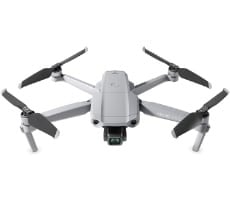ASUS ZenFone AR Review: World's First Google Tango And Daydream VR Equipped Smartphone
|

Futuremark's PCMark for Android Work 2.0 Battery test takes workloads from the benchmark itself (image and video editing, email and web browsing) and scripts them in a loop that runs until battery levels drop below 20 percent. This test is much more real-world in terms of its setup, because we calibrate display brightness on all devices to 200 Lux and the test then locks that display brightness in for the duration. As a result, with only Wi-Fi and cell radios on (Bluetooth and NFC were off, with DND mode turned on), we're able to see how long a device will last, timed to the minute as it runs down from 100 percent to 20 percent remaining battery life.

 The ZenFone AR is an ambitious attempt to leverage Google's augmented reality (Tango) and virtual reality (Daydream) platforms. Not other smartphone on the market supports both, and the number of handsets that support either one is not that large, either. In that way, ASUS is not just taking the path less traveled, it is embarking on a journey that no other company has dared to take, and it wants you to come along for the ride. Should you?
The ZenFone AR is an ambitious attempt to leverage Google's augmented reality (Tango) and virtual reality (Daydream) platforms. Not other smartphone on the market supports both, and the number of handsets that support either one is not that large, either. In that way, ASUS is not just taking the path less traveled, it is embarking on a journey that no other company has dared to take, and it wants you to come along for the ride. Should you?That is the million dollar question. Check that—in this case, it is a $699 question, plus an extra $79 for a Daydream View headset if you want the full experience offered by the ZenFone AR. We do not want to dwell too much on the price because who knows if it will drop down in the near future or if ASUS and Google will collaborate on special bundle deals as the holiday season approaches. However, we cannot ignore it either, primarily because the ZenFone AR features a previous generation Snapdragon 821 SoC inside. You do not have to look very hard to find other phones in this price range that feature a faster Snapdragon 835 SoC underneath the hood and better battery life too.
The ZenFone AR is more impressive in other areas, especially its 5.7-inch Super AMOLED display with a 2560x1440 resolution. It is absolutely gorgeous—images are bright and vibrant, and we dig the 79 percent screen-to-body ratio that comes from having slim bezels on both sides of the phone. We also like having 8GB of RAM and a generous 128GB of onboard storage (ASUS sells a SKU for $599 with 6GB of RAM and 64GB of storage).
What this phone really boils down to, however, are the cameras and the AR and VR experiences they enable. It is the biggest selling point of the ZenFone AR, but unfortunately for ASUS, it is a phone that is perhaps a bit ahead of its time. The available AR apps are neat for showing off the technology, there is no doubt about that. As far as real-world utility goes, that is a different story. Yes, it is cool to park a virtual BMW i8 on our lawn and tour the outside and inside, but after you have done that once or twice, the novelty wears off. And while the idea of being able to measure objects and spaces using your phone sounds great, inaccurate results mar the experience, and ultimately how useful it is.
ASUS is not at fault for the current state of mobile AR and VR technology, and the lack of compelling apps. If anything, ASUS deserves credit for putting out a phone like the ZenFore AR in an attempt to push the category forward and perhaps compel developers to get in gear. Be that as it may, where the fault lies does matter—the only thing that does is whether AR and VR are ready for prime time. From a casual perspective, sure. But for full-fledged experiences, we think most users will find the current state lacking, at least on the software side.
The good news here for ASUS is that the ZenFone AR is a good phone overall. Though it is rocking a previous generation Snapdragon 821 SoC, it is still a pretty fast handset. It also has copious amounts of storage and memory, a premium design, quality cameras, and some nifty tricks that are made possible by ZenUI. And while the AR and VR experiences are limited at this point in time, there are some cool apps to play with now, along with whatever might be in the pipeline from developers going forward.

|
|









